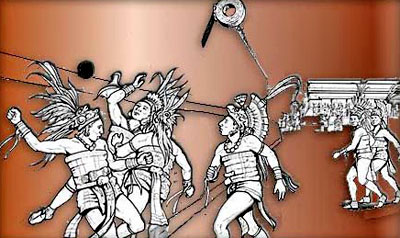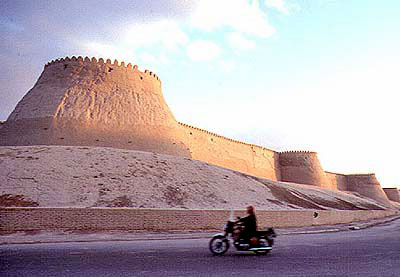|
Unfortunately, the rapid development of computers, which is uniting all the world and its acquired knowledge in one vast network, is making mysteries scarcer than hens' teeth.
Mutual similarities between many languages and cultures in various
parts of the world are becoming more and more apparent.
The 18th century English scholar, William Jones, discovered the similarity of Sanskrit with many European languages, including Greek and Latin.
Godfrey Higgins also supported their views in his two volume work, Anacalypsis. They and other distinguished linguists of the time concluded that non-Africanoid mankind probably originated in India, the Near East, and Siberia.
These 17th and 18th
century scholars were able to show that place, tribal, and religious
names tended to stay the same, no matter how far certain ancient
tribes dispersed themselves in different parts of the earth.
They created a pseudoscience called
"Historical Linguistics."
Non-diffusionism was in. Diffusionism was out. Diffusionists were labeled as racially biased for wanting to discredit the "noble savages."
But not all the "noble savages" sided with the non-diffusionists; they began to feel left out of the human race.
Some began to ask,
The suspicion that they might somehow
not have a common origin with other humans drove many of them to
drink and perdition.
The historical linguists and non-diffusionist
archeologists are beginning to retire or change professions.
They appear not to notice the nearly
exact similarities between the ancient peoples of Uzbekistan,
Pakistan, Kashmir, Rajasthan, etc., a part of India called
Sivapuri,
and the Meso-American Olmecs. I cannot understand or empathize with
this type of non-awareness.
Even today, among the Moslems, an Ulama
or Ulema is a religious scholar and leader. There was even an
ancient Near Eastern nation named Elam.
The Huichol Indians of Nayarit, Mexico
call the port of San Blas Aramara, named after the India-Indian port
they left on their voyage to America. Could this account for the
name of the Nahuas?
The double "LL" in Spanish is regarded as a separate letter, sounding like Elye or Eljeh, according to the dialect being spoken. For instance, the Argentinians pronounce "Y" plus a vowel, as "J."
For that reason, what the ancient
Ul-mags or Mo-guls of Afghanistan called Urj, the Olmecs pronounced
as Olji/Ulji.
This holy ball game was played by all
the Indians of the American Southwest, as far as the northern
borders of South America itself.
For this and other reasons, I have long
thought that the Olmecs were among the original settlers of the
American Southwest, where they became known as the Hohokams and
O'odhams, as I so state in my book, From Khyber (Kheeber) Pass to
Gran Quivira (Kheevira), NM and Baboquivari, AZ - When India Ruled
the World!
It was played in ceremonies symbolizing the creation of the world and the struggle for supremacy between the forces of good and evil; day and night; life and death.
The game was so sacred that losers were decapitated. The ruins one of the ancient Southwestern Hohokam ball courts can be seen at the archeological site near Casa Grande, Arizona.
The
Hohokam civilization, as well as its
buildings, was truly splendid, with great mud-packed buildings
several stories high, manmade lagoons, canals, and fields of corn,
bean, squash, and chilies. However, its buildings long ago melted
back into the earth; its lakes and canals became buried in desert
sand. Archeologists in Arizona tell me that Hohokam ruins can be
found throughout Southern Arizona, but they usually bury them again
after they have been excavated and examined.
Gradually, the game died in popularity, but it is still the favorite game of many Indians and mestizo villagers in Central and Northern Mexico. Tourists traveling in Mexico often see this game being played in villages near Mazatlan, such as Escuinapa.
Ulama is presently increasing in
popularity, promising to again become one of Mexico's favorite
national sports.
More Evidence
of Asian - American Contact
(Pravda, June 19, 2002) A joint expedition of Russian and Uzbek archaeologists has discovered several ancient pyramids in Uzbekistan.
According to the scientists, these 15-metre high constructions may be at least 2,700 years old. The ancient pyramids were discovered in a remote mountains area, in the Kashkadaryin and Samarkand regions in the south of the country, according to the BBC quoting from Pravda.
Archaeologists state that the discovered pyramids are similar to the ones of Giza, Egypt, but in contrast to them, Uzbek pyramids have a flat surface, resembling those found in Central America. According to the experts, thanks to their remoteness, the pyramids were not taken to pieces to serve as building material in later epochs.
According to archaeologists, if the constructions are really pyramids, this is a very important discovery, since nothing of the kind has been found in this area before.
Now, the task of the scientists is to
establish a chronology and examine known local cultures, to
ascertain the purpose of these constructions, tombs, temples, or
something else.
The Walls of ancient Khiva [pictured above], Uzbukistan, one of the oldest living cities on earth.
Like
the buildings of the Southwestern American Indians, Khiva's walls
and buildings are made of packed mud and adobe, even having the
appearance of some types of
Southwestern Puebloan architecture.
It would be good if the non-diffusionists
and historical linguists could show me where I have gone wrong!
|



